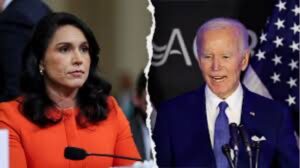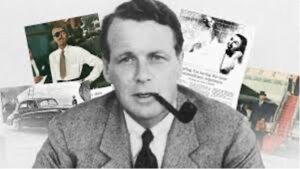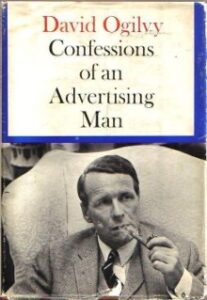How to Make Your Good Copy Great
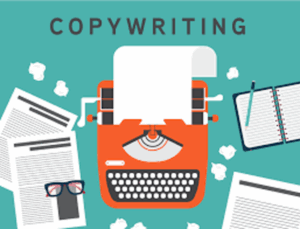
Writers love to argue about what makes writing “good.” But until you define what kind of writing you’re talking about – and what goal that writing is meant to achieve – you’re not really saying much.
As copywriters, we’re not writing to impress English teachers. We’re not chasing literary awards or critical acclaim. We’re writing to persuade someone – quickly, clearly, and powerfully – to take a specific action. Sign up. Click. Buy. Say yes.
And in that context, good copy is easy to spot. It’s competent. Clear. It explains the product not by focusing too much on its features, but on emphasizing its benefits. It resolves any doubts about the product that may arise, and it ends by making the offer (the price, the terms, the guarantee, etc.) seem like a good deal.
And finally, and most importantly for direct marketing, good copy should sell a goodly amount of the product or service it is promoting.
So, what about great copy? Is that just good copy that’s a little bit better?
The answer is obviously no.
Great copy doesn’t just sell a lot of product – it sells the idea of the product so persuasively that the prospect not only purchases more of it than he would have otherwise but feels good about it. He feels as if, in buying this product, he’s acquiring other things he values even more – relief, identity, power, control, peace of mind.
That’s my explanation of what great copy does. But what makes it great? What separates it from merely good? And how can one take a good piece of copy and make it great?
I wish I could say that I discovered the difference between good and great copy as a single idea at a single moment in my copywriting career. But the truth is, it was a discovery made piecemeal over more than 30 years of writing copy, critiquing copy, editing copy, and teaching copy.
It turns out that copywriting, like any complicated skill, involves myriad insights, instincts, techniques, strategies, and habits – none of which is hard to understand or learn, but all of which are essential if you want to go from being good to being great.
Along the way, I’ve come to believe that three core principles lie at the heart of truly great copy. And if you want to write copy that consistently moves the needle – copy that transforms a reader into a buyer, and a buyer into a repeat customer – you need to be fluent in all three.
A Working Definition of Great Copy
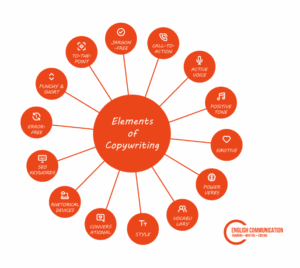
To understand what makes copy great, we need to be precise about what we mean. Not poetic. Not philosophical. Just clear.
Let’s start here: Good copy does its job. It’s readable. It’s persuasive. It identifies a need or want and presents a solution. It introduces the product, frames the benefits, answers objections, and closes with a solid offer.
You’ve probably written a fair bit of good copy. So have I. It gets results. Sometimes even excellent results.
But then – if you’re lucky – you come across a piece of copy that does something else. It doesn’t just check the boxes. It takes hold of your attention and doesn’t let go. You’re drawn in. You feel something. You want something you didn’t even know you wanted five minutes ago. That’s great copy.
So, what changed?
It’s not just the mechanics. Great copy uses all the same tools as good copy: headlines, leads, bullets, guarantees, calls to action. It still follows the same guidelines – clarity, urgency, specificity, credibility.
But great copy elevates those requirements. It uses them in the service of something bigger. It delivers an emotional charge. It surprises. It offers insight. And most importantly, it convinces the reader that this product (and this idea behind it) is not just useful or valuable – it’s necessary.
That emotional necessity is key. Great copy doesn’t just persuade your intellect. It awakens your imagination. It creates a felt sense that this thing you’re reading about will change your life, even if just a little. It reframes how you see a problem or desire. It introduces an idea that sticks in your head all day.
And behind that emotional pull, you’ll usually find the core elements of great copy: a story the reader can identify with, a sense that a valuable secret is about to be revealed, a believable but powerful promise, compelling evidence to support every claim, and a voice the reader wants to spend time with.
When these elements work together, the result isn’t just attention – it’s transformation. The reader begins to feel understood. He sees himself in the story. He believes the promise. He wants to know the secret. And by the time the close arrives, the sale is no longer a question of logic – it’s a foregone conclusion.
Which raises the obvious question: How?
Over the years, I’ve narrowed my answer down to three principles – three drivers that show up in almost every piece of copy I consider great:
1. An Emotionally Compelling Idea that anchors the message and grabs attention
2. The Rule of One, which gives the copy its laser focus
3. A deliberate Architecture of Persuasion, which guides the reader step-by-step toward action
An Emotionally Compelling Idea – the Engine of Great Copy

In earlier days, I called it the “Big Idea.” That term still has a certain weight. But over time, I’ve come to prefer something more precise: the “Emotionally Compelling Idea.”
It doesn’t have to be “big” in the philosophical sense. It doesn’t have to solve a cultural dilemma or make a sweeping promise. What it must do is feel undeniably attractive to the reader – almost irresistible – from the very first moment it’s introduced.
In great copy, the idea is the gravitational center of the message. And it deserves to be ranked at the very top of the hierarchy. Without a powerful idea, the rest of the copy struggles. With one, everything else aligns.
But here’s the key: What gives the idea its power isn’t just what it says – it’s how it’s said. How it’s framed, how it’s worded, and how it’s timed.
The Emotionally Compelling Idea hits a nerve. It may come disguised as a promise, or a story, or even a secret. But when you strip those elements down to their essence, what you find is an idea – a fresh or surprising way of seeing a familiar problem, or a provocative way of solving it. And when that idea is delivered with emotional resonance, it feels like a revelation.
The prospect doesn’t just hear it – they experience it. They say to themselves: “Yes! That’s exactly what I’ve been missing. That’s what I need.”
And here’s where the promise comes in. A great idea doesn’t stand alone. It contains a promise – sometimes explicitly, sometimes implicitly. It assures the reader that if they keep going, something meaningful will be delivered: relief, clarity, transformation, success.
The idea must also feel like a bit of a secret – that the reader feels they’re being let in on something not everyone knows. It creates a subtle exclusivity. “Here’s the truth nobody told you about…” That dynamic short-circuits resistance and keeps the reader engaged.
And when the idea is wrapped in a story, its emotional charge intensifies. The reader becomes the protagonist. They see themselves in the struggle, feel the tension, and experience the triumph – all before the product is even introduced. That emotional preview builds belief faster than any logic ever could.
But even the strongest idea will fizzle if it lacks durational power. Great copy needs an idea that can do heavy lifting over time – months or even years. It can’t just be a clever hook that works once. It must be capable of anchoring a full promotion, and then a control, and then an entire campaign.
This is what makes great ideas rare. But when they work, they don’t just move product – they create a Tipping Point.
As Malcolm Gladwell described in his book, a Tipping Point occurs when an idea spreads beyond its initial audience and starts to change the broader landscape. I’ve seen this happen in direct response. One great idea, expressed with perfect timing and emotional force, can redefine how people think about a product – or even an entire category.
It sets a new benchmark. Other writers have to answer to it. Prospects begin repeating its phrases. Competitors shift their messaging to match it.
That’s what a truly Emotionally Compelling Idea can do. It doesn’t just persuade. It changes the game.
And finally – none of this matters if the idea is hard to understand. Accessibility is essential. That’s why I use the Flesch-Kincaid scale to test my writing, and why I insist that copy aimed at a mass market reads at a 7.5 grade level or lower.
Writing simply isn’t about dumbing things down. It’s about helping your prospect say “yes” without having to decode your meaning. If your idea is emotionally compelling but buried under abstraction or jargon, it won’t move anyone.
To write great copy, you must learn to take a complex emotional or intellectual idea and express it simply, clearly, and urgently. That’s where craft meets discipline. And that’s where good copy turns into great.
The Rule of One
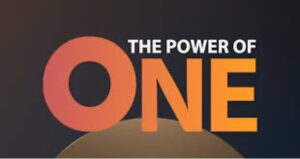
One of the simplest – and most easily ignored – principles of great copywriting is something we’ve come to call The Rule of One.
At first glance, it might sound limiting. One idea? One reader? One benefit? Shouldn’t persuasive copy try to do more?
But in practice, The Rule of One is what gives a sales message its punch. It creates focus. It sharpens the emotional core of the offer. And it eliminates the fatal distractions that kill so many otherwise promising promotions.
When you’re writing copy that’s meant to sell, the worst thing you can do is try to cram in every possible selling point or, worse, try to speak to “everyone.” You end up with a flabby, wandering pitch that means something to no one.
Great copy always feels personal and urgent. That only happens when the message is designed with a single reader in mind. Not a demographic or persona, but a vivid, specific individual. Someone you know – or feel like you know – and whose desires, fears, and dreams you understand deeply. That imagined intimacy forces the copy to speak clearly, emotionally, and directly.
Likewise, the copy should be built around one dominant idea – an Emotionally Compelling Idea that powers the whole message. That’s the idea you must sell before you can sell the product. It should be simple enough to say in one sentence and strong enough to trigger an almost subconscious “yes” response.
And finally, you want one overwhelming promise – a core benefit the prospect can’t ignore. Yes, your product may have ten great features. But your reader can’t hold all that in his mind at once. So give him one thing to desire above all else. If your copy is persuasive, he’ll believe the rest will follow.
There’s one more element worth adding – because it’s often overlooked: Great copy makes its case one argument at a time. Not in parallel, but in sequence. It builds like a story, with each sentence supporting the last and preparing the reader for the next. That’s how you move a prospect logically and emotionally toward the sale – by stacking belief on belief, not by throwing everything against the wall and hoping something sticks.
The Rule of One does not mean you’re limited to only one claim or one piece of evidence. You can have supporting facts, stories, comparisons, demonstrations, and testimonials. But they must all serve one central thesis. And they must be deployed with narrative discipline: no tangents, no lists of disconnected claims, no copy that reads like a catalog.
Every paragraph should do one thing. Then the next paragraph does the next thing. And so on.
Great copy builds layer after layer of persuasive power around a single emotionally charged core. And it leads the reader along a straight, purposeful line – never in circles and never in scattershot bursts.
When you follow The Rule of One, you create copy that’s not just tighter and stronger – but dramatically more effective.
The Architecture of Persuasion
Great copy doesn’t just talk – it moves. And it doesn’t move in circles or digressions. It moves forward, in a straight persuasive line, from curiosity to belief to action. That’s the job of persuasive structure.
You can call it the persuasive journey. Or the flow of emotional logic. I like to call it The Architecture of Persuasion. Because like a well-designed building, great copy has bones. There’s a frame holding it up, a foundation keeping it stable, and a sequence that determines how the reader moves through the message.
And when it’s done well, the reader doesn’t even notice the structure. He just keeps reading – and ends up buying.
The Persuasive Journey: A Proven Flow
Many copywriters are taught the classic AIDA formula: Attention, Interest, Desire, Action. It’s a useful shorthand. But in real-world direct response, the path is usually more layered. Here’s the structure I’ve seen in most of the best-performing promotions of the last 40 years:
1. The Hook
You have seconds – sometimes less – to grab attention. So the opening must hook. What makes a hook work isn’t its format, but its effect. It could be a bold promise, a surprising fact, a provocative question, a compelling story, or even the offer itself. The key is that it stops the reader cold and compels him to keep going.
2. The Problem or Opportunity
This is the emotional setup. What’s at stake? What’s the reader suffering from – or about to miss out on? This doesn’t always have to be framed as a problem. In many successful promotions, it’s an opportunity: a breakthrough, a shortcut, a new path to something the reader wants. The point is to stir emotion and create a sense of need or possibility.
3. The Emotionally Compelling Idea (the Insight)
This is the “Aha” moment – the turning point. A new way of seeing the problem, or a hidden truth behind the opportunity. It often comes as a fresh articulation of something the reader has felt but never put into words. It lands with emotional and intellectual force. He thinks: “Yes! That’s exactly it.”
This is also where the core idea lives – the gravitational center of the entire promotion. It must be simple, striking, and worded in a way that makes it feel new, true, and deeply relevant.
4. The Solution or Offer
Once the reader believes the problem or opportunity is real – and that the idea behind it makes sense – you present your product as the next logical step. If you began with a problem, this is the solution. If you began with an opportunity, this is how the reader takes advantage of it. In either case, the product must feel inevitable.
5. Proof
Now you must substantiate your claims. This is where credibility is built. The types of proof vary:
* Factual Proof – data, studies, historical precedent
* Expert Proof– endorsements, credentials, authority quotes
* Social Proof – testimonials, user ratings, mass adoption
* Demonstrative Proof – show how it works; side-by-side comparisons
Each type of proof supports different kinds of claims. The best copy uses multiple types, layered and sequenced strategically.
6. Overcoming Objections
Before you close, you must address the reader’s hesitations. What doubts remain? What silent objections are holding him back? Address them directly. Acknowledge them empathetically. And answer them persuasively.
This can be done through FAQs, guarantees, logic, story, or even tonal voice. The key is to make the reader feel understood and reassured.
7. The False Close
Here, you recap everything the reader is about to get. You begin to wind down the pitch – but instead of asking for the order, you surprise the reader with something extra: a new benefit, a bonus, or a hidden feature.
Ideally, this extra has a perceived value equal to or greater than the price you’re about to ask. I call this the “liquidating benefit” because it liquidates the cost in the reader’s mind. It makes the offer feel irresistible.
8. The Final Close
Now you ask for the order. But you do it carefully and completely. This section includes:
* A restatement of the core promise and key benefits
* A reminder of the liquidating bonus
* The guarantee (risk reversal)
* And a final reason to act now (urgency, scarcity, or time-sensitive reward)
And finally, of course, the call to action – plus (in a print ad or mailed offer) the order form itself.
Flow and Transitions
The best copy feels frictionless. The reader never wonders “Why am I reading this?” or “Where is this going?” That smooth flow doesn’t happen by accident – it’s built into the structure.
Transitions are the glue. Each section should point to the next. Each paragraph should set up the one that follows. When the rhythm is right, the reader is carried forward.
Most of the time, when a piece of copy feels clunky or hard to follow, it’s not the writing – it’s the architecture.
Common Pitfalls
* Presenting too much at once – parallel instead of sequential persuasion
* Asking for the sale too early
* Ignoring objections or assuming belief
* Overloading features without emotional framing
Structure Is Freedom
Some writers fear that structure is formulaic. But the best copywriters know the opposite is true. Structure liberates your creativity. It gives you confidence that the message will land.
When you understand The Architecture of Persuasion, you stop writing aimlessly. You write with purpose. And your reader doesn’t just read – he responds.
The Interplay

We’ve covered the three principles that separate good copy from great:
* An Emotionally Compelling Idea
* The Rule of One
* The Architecture of Persuasion
The Emotionally Compelling Idea is the engine that drives the copy. It’s not just any idea – it’s one that strikes the reader emotionally and instantly feels relevant. It makes him want to keep reading. This is where five additional elements come into play in whatever form best serves the piece.
1. A Well-Told Story
Story brings everything to life. It humanizes the problem, dramatizes the benefit, and keeps the reader emotionally engaged. It often delivers the idea, demonstrates the solution, or even acts as the proof. A good story isn’t just entertainment – it’s structure in disguise.
2. A Powerful Secret
Great copy often hinges on the promise of revelation. A secret gives your copy tension, intrigue, and emotional pull. It can take many forms: a hidden truth, a forgotten principle, a newly discovered method. The key is that it feels exclusive – like something the reader is lucky to be learning.
3. A Persuasive Promise
A strong promise gives the reader something to want. It’s the expression of your core benefit – and it must be simple, bold, and believable. It focuses the copy and aligns with The Rule of One. A vague or weak promise kills persuasion. A clear and emotionally satisfying one can carry the entire piece.
4. Convincing Proof
You must support every major claim with proof. But not all proof is created equal:
* Use factual proof when logic is needed.
* Use expert proof when authority matters.
* Use social proof when trust is lacking.
* Use demonstrative proof when the product’s advantage is visible.
Great copy selects the right kind of proof at the right moment – and layers it for effect.
5. An Authentic Voice
Voice is what makes the reader stay. It’s the human quality in your copy – the tone, rhythm, and personality that makes it sound real. Voice builds trust, reinforces the message, and makes the emotional beats land. Without voice, even strong copy can feel flat or artificial.
These elements don’t live in separate compartments. They work together.
* The idea often arrives through a story.
* The secret is embedded in the idea.
* The promise is born from the idea and supported by proof.
* The voice binds it all into something fluid and believable.
The more fluently you can blend them, the more persuasive and powerful your copy becomes.
Final Thoughts: Practice, Iterate, Master
The best copywriters don’t write great copy by accident. They build it, using all of the above elements, again and again, until it becomes instinctive.
Study them. Practice them. Use them deliberately. You’ll stop writing decent copy, and start producing promotions that pull harder, convert better, and stand the test of time.


